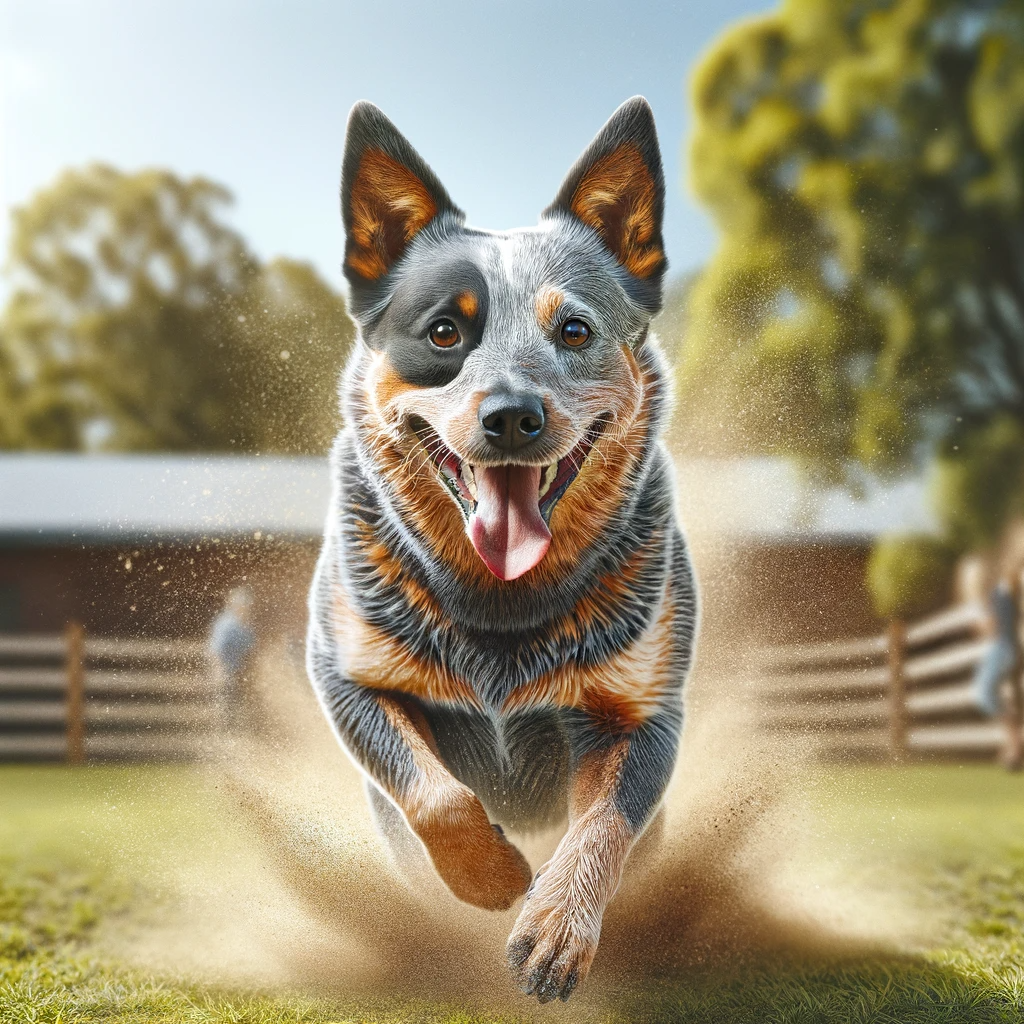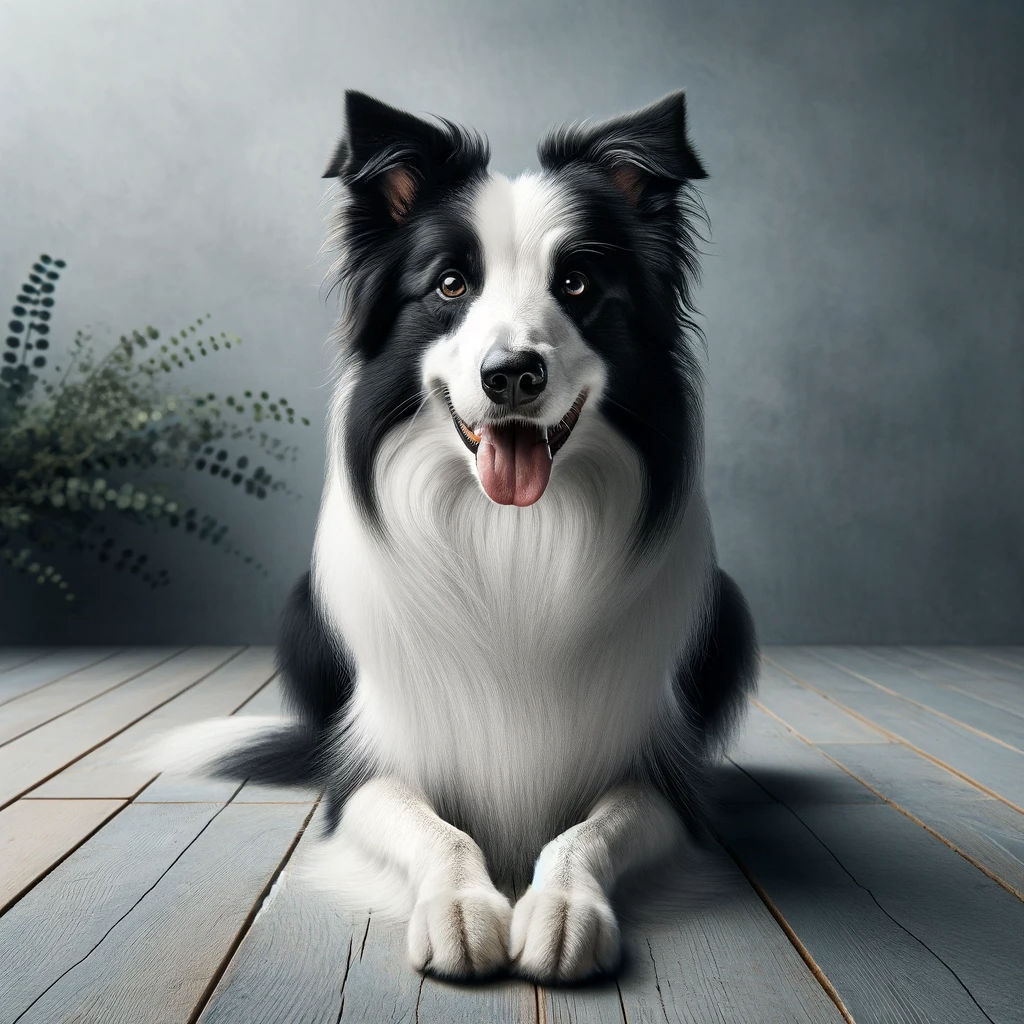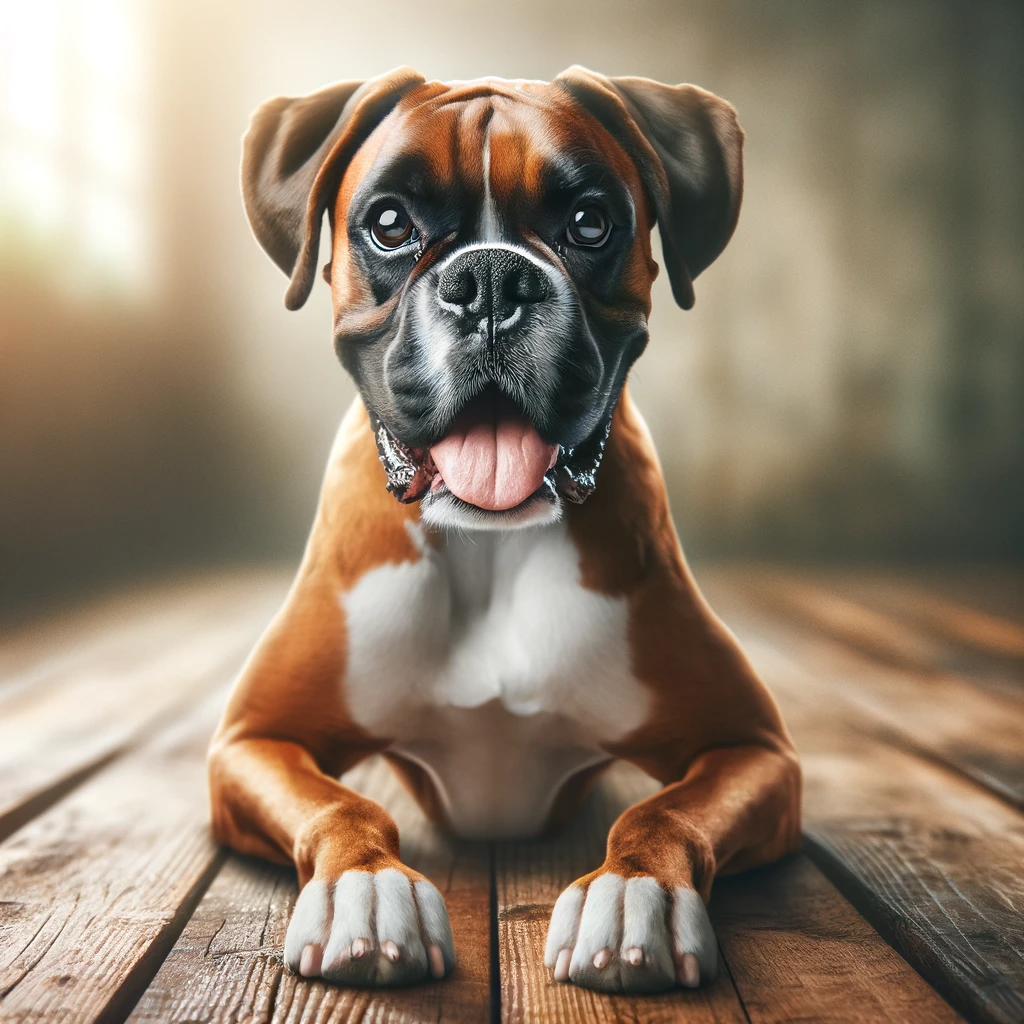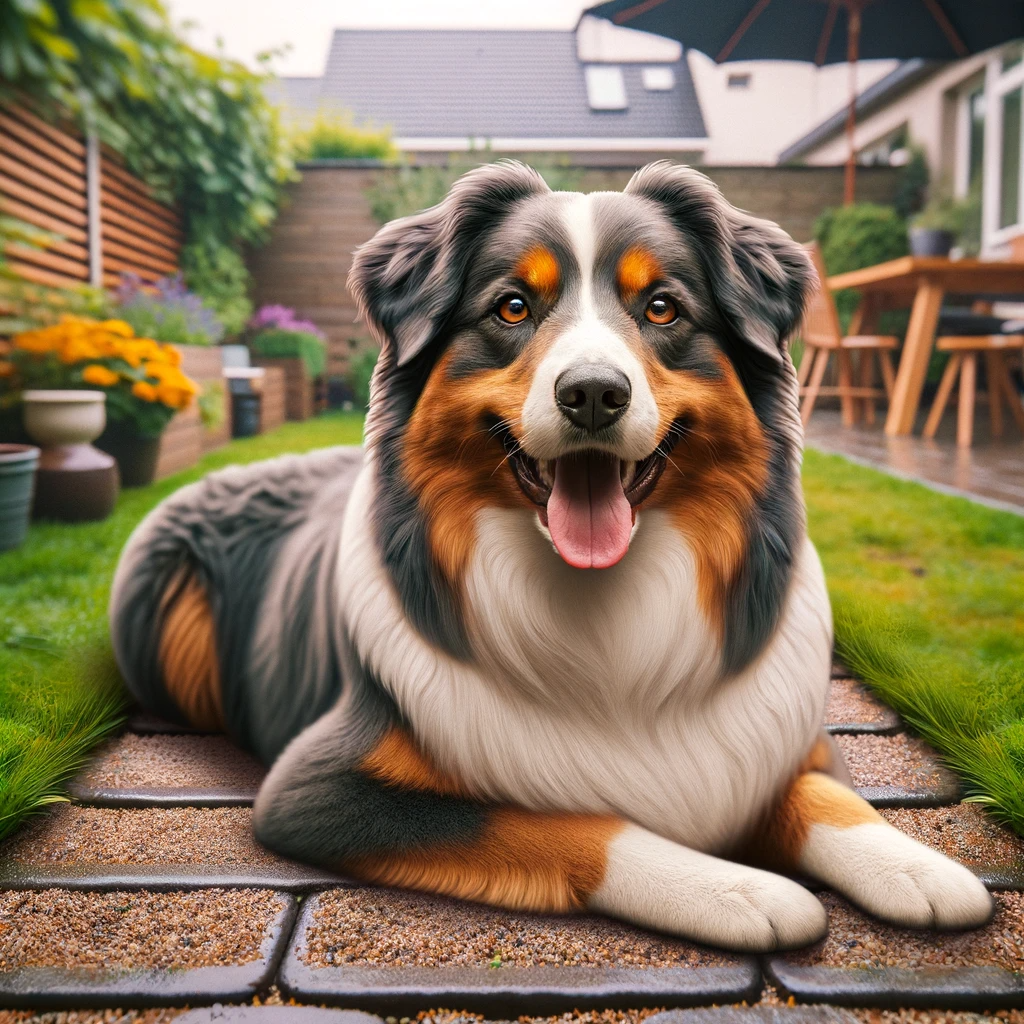
Think your furry friend has what it takes to top the charts of the world’s healthiest dogs?
In a world where canine health is paramount, some breeds outshine the rest in terms of vitality and vigor. Discover the crème de la crème of canine health as we unveil the most robust and resilient dog breeds on the planet! Does your beloved pooch make the cut? Dive into our comprehensive guide and see where your dog stands in the global ranking of health and longevity!
Factors Influencing Dog Health
A dog’s health isn’t just about genetics; it’s a complex interplay of multiple factors. Genetics do play a key role, determining predispositions to certain health conditions. However, lifestyle choices such as regular exercise and mental stimulation are equally vital in ensuring a dog’s well-being. Diet, another critical factor, should be balanced and appropriate for the dog’s age, breed, and health status. Preventive healthcare, including regular check-ups, vaccinations, and dental care, can ward off diseases and catch issues early. A nurturing environment, with ample socialization and love, contributes significantly to a dog’s overall health and happiness.
Understanding what makes a dog healthy is key, but how does this translate when choosing a breed? The following breeds not only possess genetic advantages but also thrive when given the right care, environment, and lifestyle. From small to large, these breeds exemplify health and vitality, setting a benchmark for what potential dog owners should look for.

The Australian Terrier, an energetic and amiable breed, stands out as a compact, short-legged terrier developed in Australia. With a lifespan of 12 to 15 years, these dogs are known for their vitality and robust health. Weighing about 15-20 pounds and standing around 10-11 inches at the shoulder, they are small but sturdy.
History and Origins
This breed’s history dates back to the 19th century in Australia, where they were bred from a mix of several terriers, including the Scottish, Cairn, Dandie Dinmont, and Yorkshire Terriers. The objective was to create a versatile dog that could handle the rough Australian terrain, control rodents, and be a loyal companion. The Australian Terrier achieved this beautifully, excelling in both working roles and as a family pet.
Physical Characteristics
What’s fascinating about Australian Terriers is their unique coat, a double coat with a soft, short undercoat and a harsh, straight, and weatherproof outer coat. This feature made them particularly suited to the Australian climate. Their coloring varies, including blue and tan, solid sandy, and solid red, and they are known for their distinctive ruff around the neck.
Temperament and Behavior
Their temperament is another notable aspect. Australian Terriers are exceptionally energetic, making them great companions for active individuals or families. They are also known for their intelligence and eagerness to please, which makes them relatively easy to train. However, their high energy levels and intelligence mean they need mental and physical stimulation to prevent boredom.
Moreover, these terriers are known for their good temperament. They tend to be friendly and adaptable, thriving in both rural and urban settings. They’re also known for their loyalty and protective nature, making them excellent watchdogs.
Health and Lifespan
Health-wise, Australian Terriers are generally robust, but like all breeds, they can be prone to certain conditions like allergies, diabetes, and patellar luxation. Regular veterinary check-ups and a healthy lifestyle can help mitigate these risks.

The Pomeranian, affectionately known as the “Fluffy Charmer,” is a breed that captures hearts with its adorable appearance and endearing personality. These small, sprightly dogs boast a lifespan of 12 to 16 years, offering a long-lasting companionship filled with joy and affection.
Breed Origins and History
Originating from the Pomerania region in north-eastern Europe, Pomeranians were originally much larger, bred as sheep herders. Over time, they were bred down in size, becoming the petite companions we know today. This breed gained immense popularity in the 18th century, especially after Queen Victoria of England fell in love with a Pomeranian, further miniaturizing the breed through selective breeding.
Appearance and Size
Weighing a mere 3 to 7 pounds and standing only 6 to 7 inches tall at the shoulder, Pomeranians are part of the toy dog group. Despite their small size, they have a commanding presence, characterized by a luxurious double coat that comes in a wide variety of colors, including red, orange, white, cream, blue, sable, and black. Their fluffy fur, especially the distinctive frill extending over their chest and shoulders, makes them instantly recognizable.
Personality Traits
Pomeranians are known for their lively and playful nature. They are intelligent and eager to learn, which makes them relatively easy to train. However, their intelligence also means they need consistent mental stimulation to prevent boredom. They are excellent at learning tricks and love being the center of attention, making them stars in obedience and agility sports.
The breed’s temperament is as delightful as its appearance. Pomeranians are friendly and affectionate, forming strong bonds with their family members. They are known to be alert and curious about the world around them, often expressing their feelings with a distinctive vocal range.
Health Considerations
In terms of health, Pomeranians are generally a sturdy breed but can be prone to certain health issues such as luxating patella, tracheal collapse, and dental problems due to their small mouths. Regular veterinary care and good dental hygiene can help manage these risks.

The Papillon, also known as the “Butterfly-Eared Dynamo,” is a charming toy breed distinguished by its elegant appearance and vivacious character. With a lifespan of 14 to 16 years, Papillons offer a long-term commitment of joy and companionship, marked by their lively and cheerful disposition.
Historical Background
Originally called the Continental Toy Spaniel, the Papillon is one of the oldest of the toy spaniels, tracing its lineage back to Europe. The breed’s most striking feature is its large, butterfly-like ears, from which it gets its name – “Papillon” being French for “butterfly.” These distinctive ears are fringed with long hair, and the breed can also come in a drop-eared variety known as the Phalène, which means “moth” in French.
Physical Description
Papillons typically weigh between 5 to 10 pounds and stand about 8 to 11 inches at the shoulder. Despite their small size, they have a robust constitution. Their coat is long, fine, and silky, flowing over the body without undercoat. The breed sports a variety of colors, usually white with patches of any color except liver.
Temperament and Intelligence
These dogs are renowned for their intelligence and are often described as big dogs in small bodies. They are easy to train, thanks to their eagerness to please and quick learning ability. This makes them excellent candidates for obedience and agility competitions, where they frequently excel.
Papillons are not just smart; they are also known for their cheerful and friendly nature. They thrive on human companionship and are known to be playful and affectionate with their family. Their alertness and keen senses make them good watchdogs, though they are more likely to greet strangers with friendly curiosity than with aggression.
Health and Care
Health-wise, Papillons are generally a healthy and hardy breed. However, they can be prone to certain health issues like patellar luxation, dental problems, and certain cardiac conditions. Regular veterinary check-ups and a healthy lifestyle can help ensure their well-being.

The Shih Tzu, affectionately known as the “Lion Dog,” is a breed that exudes a majestic charm and friendly disposition. Renowned for their long, flowing coats and sweet-natured temperament, Shih Tzus have a lifespan of 10 to 18 years, offering a long-standing companionship filled with affection and loyalty.
Breed Origins
Originating from Tibet, the Shih Tzu was highly valued by Chinese royalty, particularly during the Ming and Qing Dynasties. The breed’s name, “Shih Tzu,” translates to “lion dog” in Chinese, reflecting their resemblance to traditional Chinese lion statues. This illustrious background is mirrored in their dignified and somewhat aristocratic demeanor.
Physical Features
A small dog breed, Shih Tzus typically weigh between 9 to 16 pounds and stand about 9 to 10.5 inches at the shoulder. Their most striking feature is their luxurious double coat, which can grow to floor length. The coat comes in a variety of colors, including black, white, blue, silver, red, and combinations thereof. Remarkably, despite their abundant fur, Shih Tzus are considered a low-shedding breed, making them suitable for people with allergies.
Behavior and Temperament
Shih Tzus are known for their friendly and outgoing nature. They are particularly good with children and other pets, making them ideal family dogs. Their temperament is generally sweet, affectionate, and playful. They thrive on human companionship and prefer to be in the company of their owners, often following them from room to room.
Training a Shih Tzu can be both enjoyable and challenging. They are intelligent and capable of learning quickly, but they also have a streak of independence. Consistent, positive reinforcement works best for this breed. Their adaptability makes them well-suited for both apartment living and homes with yards.
Health and Wellness
Health-wise, Shih Tzus are a robust breed but can have issues related to their brachycephalic (flat-faced) nature, such as breathing difficulties and heat sensitivity. They may also be prone to eye issues and hip dysplasia. Regular veterinary care, proper grooming, and a healthy diet are essential for maintaining their wellbeing.

The Australian Cattle Dog, commonly known as the “Blue Heeler,” is a robust and energetic breed known for its remarkable intelligence and work ethic. With a lifespan of 12 to 15 years, these dogs are renowned for their endurance, few genetic health issues, and their role as reliable working dogs in various settings.
Historical Development
Originating in Australia in the 19th century, the Australian Cattle Dog was bred for herding cattle over long distances across rough terrain. The breed was developed by crossing native Australian Dingos with imported herding dogs, including Collies and Smithfield herders. This unique lineage contributed to the breed’s exceptional stamina, resilience, and herding abilities.
Physical Attributes
Australian Cattle Dogs are medium-sized, with males standing about 18-20 inches at the shoulder and females slightly smaller. They typically weigh between 35 to 50 pounds. One of the breed’s most distinctive features is its coat color. They are born white (a trait inherited from the early Dingo-crosses) and later develop their adult coloration, which can be either blue or red speckle. The blue coat variation led to the nickname “Blue Heeler,” with “heeler” referring to their herding technique of nipping at cattle’s heels.
Temperament and Trainability
These dogs are known for their intelligence and high energy levels. They require significant physical and mental stimulation to stay happy and healthy, making them well-suited for active owners and working environments. Their intelligence makes them highly trainable, and they excel in various dog sports, including obedience, agility, and, of course, herding.
The Australian Cattle Dog’s temperament is characterized by loyalty, protectiveness, and a keen alertness. They tend to be wary of strangers but are exceptionally devoted to their family. This breed thrives on human companionship and being involved in day-to-day activities.
Health and Longevity
Health-wise, the Australian Cattle Dog is known for its robust constitution. They have few genetic health issues compared to many other breeds. However, like all breeds, they can be prone to certain conditions, such as hip dysplasia and progressive retinal atrophy. Regular veterinary check-ups, a healthy diet, and plenty of exercise can help ensure a long and healthy life.

The Border Collie, often hailed as “The Shepherd’s Pride,” is a breed synonymous with intelligence, agility, and trainability. Renowned for their remarkable herding abilities and keen mind, Border Collies boast a lifespan of 12 to 15 years, during which they often form a deep and enduring bond with their owners.
Breed History
Originating in the border region between Scotland and England, the Border Collie was developed to herd livestock, particularly sheep. Their name reflects their origin, with “Collie” being a Scottish dialect word used to describe sheepdogs. The breed is the result of a careful selection for intelligence and herding prowess, making them unparalleled in their fieldwork.
Physical Characteristics
Border Collies are medium-sized dogs, with males typically standing 19-22 inches at the shoulder and females slightly smaller. They usually weigh between 30 to 45 pounds. The breed features a double coat that can be either smooth or rough, and comes in a variety of colors, although black and white is the most common.
Intelligence and Temperament
The most striking attribute of the Border Collie is their intelligence. They are often cited as the most intelligent of all domestic dogs. This intelligence, coupled with their high energy levels and eagerness to please, makes them highly trainable. They excel in various canine sports, including obedience, flyball, agility, tracking, and, of course, herding trials.
Border Collies have a unique way of herding by using an intense gaze known as “the eye,” which they use to control and move livestock. They are also known for their speed, agility, and stamina, able to work long hours in varying conditions.
The breed is not just a working dog; they are also known for their loyalty and affectionate nature, making them wonderful family pets. However, their high energy and intelligence mean they require a lot of mental and physical stimulation. They are best suited to an active lifestyle and may not be the right fit for sedentary living.
Health Aspects
In terms of health, Border Collies are generally hardy, but they can be prone to certain genetic conditions such as hip dysplasia, collie eye anomaly, and epilepsy. Responsible breeding practices and regular health checks can help mitigate these risks.

The Beagle, affectionately known as “The Merry Hound,” is a breed characterized by its friendly demeanor, outgoing personality, and charming appearance. With a lifespan of approximately 12 to 15 years, Beagles are known for their sociable nature and relatively low maintenance, making them a popular choice for families and individuals alike.
Origins and History
Originating in England, the Beagle has a rich history dating back to Roman times. However, the modern breed was developed in the 19th century for hunting small game, particularly rabbits, due to their keen sense of smell and strong tracking instincts. Despite their hunting background, Beagles have transitioned seamlessly into beloved family pets.
Appearance and Size
Beagles are small to medium-sized dogs, typically weighing between 20 to 30 pounds, with males slightly larger than females. They stand about 13 to 15 inches at the shoulder. One of the most distinctive features of Beagles is their expressive faces, with big brown or hazel eyes and long, hound-like ears. Their coat is short, dense, and weather-resistant, coming in various colors and patterns, the most common being tri-color (black, brown, and white).
Temperament and Behavior
The temperament of Beagles is one of their most endearing traits. They are friendly, curious, and merry, making them great companions for children and adults alike. They are also known for their tendency to be vocal, often baying and howling, traits that stem from their hunting heritage.
Health and Care
As pets, Beagles are relatively low maintenance. Their short coat requires regular brushing but doesn’t usually need professional grooming. However, they are known to shed. Their high energy levels require regular exercise to keep them healthy and prevent boredom.
Beagles are generally healthy, but they can be prone to certain conditions like obesity, epilepsy, and ear infections, mainly due to their long ears. Regular veterinary check-ups, a balanced diet, and proper ear care can help maintain their health.

The Boxer, often referred to as “The Playful Protector,” is a breed known for its strong build, athletic prowess, and endearing personality. With an average lifespan of 10 to 12 years, Boxers are cherished for their energy, strength, and loyal nature, making them both excellent companions and vigilant protectors.
Breed Evolution
Originating in Germany in the late 19th century, the Boxer was bred from the now-extinct Bullenbeisser and the English Bulldog. Initially used for hunting large game and later as working dogs, Boxers have evolved into popular family pets, admired for their character and versatility.
Physical Traits
Physically, Boxers are medium to large dogs, with males typically standing 23-25 inches at the shoulder and females slightly smaller. They usually weigh between 65 to 80 pounds. Their muscular, athletic build is one of their most notable features, matched by a distinctive short, sleek coat that comes in shades of fawn, brindle, and sometimes white. The breed is also characterized by its broad, square head, strong jaws, and expressive, dark brown eyes.
Personality and Behavior
Boxers are renowned for their playful and energetic nature. They are often described as being forever young, maintaining a puppy-like demeanor well into adulthood. This boundless energy makes them excellent companions for active individuals and families.
Despite their playful nature, Boxers are also known for their protective instincts. They are natural guardians of their homes and families, often showing a wariness around strangers while being exceptionally gentle and patient with children. This dual nature of playful energy and protective instinct makes them unique.
Training and socialization are crucial for Boxers, given their strength and energy. They respond well to positive, consistent training methods and require regular exercise to keep them physically and mentally stimulated.
Health and Lifespan
Health-wise, Boxers are generally robust but can be prone to certain health issues like heart conditions, hip dysplasia, and certain cancers. They are also sensitive to extreme temperatures, particularly heat, due to their short snouts. Regular veterinary check-ups and a healthy lifestyle are essential for their well-being.

The Australian Shepherd, known as “The Versatile Herder,” is a breed celebrated for its intelligence, high energy, and remarkable versatility. With a lifespan of 12 to 15 years, Australian Shepherds are sought after for their ability to excel in various roles, from herding livestock to being a devoted family companion, requiring regular exercise and mental stimulation.
Historical Origins
Despite its name, the Australian Shepherd did not originate in Australia but in the western United States. The breed was developed in the 19th and early 20th centuries from a mix of herding dogs that came to America with Basque shepherds from Australia. These dogs were prized for their exceptional herding abilities, intelligence, and adaptability, characteristics that define the breed today.
Physical Description
Australian Shepherds are medium-sized dogs, with males typically standing about 20-23 inches at the shoulder and females slightly smaller. They usually weigh between 40 to 65 pounds. The breed is known for its beautiful coat, which can be straight to wavy, medium in length, and comes in a variety of colors, including blue merle, black, red merle, and red, often with white and/or tan markings.
Temperament and Abilities
One of the most remarkable traits of the Australian Shepherd is its intelligence. They are quick learners and are known for their problem-solving abilities. This intelligence, combined with their high energy levels, makes them highly trainable but also means they require plenty of mental and physical stimulation. They excel in dog sports like agility, obedience, and herding trials.
The temperament of the Australian Shepherd is as impressive as its intellect. They are loyal, affectionate, and have a good-natured disposition, making them excellent family pets. However, their herding instincts can manifest in trying to herd children or other pets, which requires proper training and socialization.
Health Considerations
Health-wise, Australian Shepherds are generally hardy, but they can be prone to certain genetic conditions like hip dysplasia, collie eye anomaly, and MDR1 gene mutation, which affects drug sensitivity. Regular veterinary care and a healthy lifestyle can help mitigate these risks.